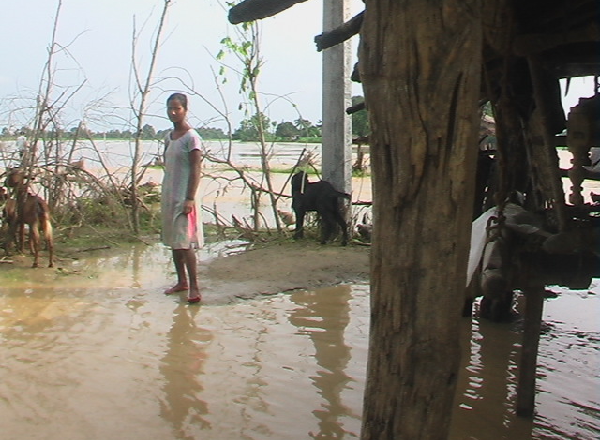
Emmergency Flood and Landslide Response & Teransitional Recovacy Program-Nepal mid west region.
The Emergency Flood and Landslide Response & Transitional Recovery Program was implemented in the Bardiya District, specifically targeting the Neulapur and Bagnaha VDCs (Village Development Committees) in Nepal. This program was designed to address both immediate relief needs and long-term recovery efforts for communities severely affected by floods and landslides. The project focused on providing essential support, restoring community infrastructure, and promoting resilience in the wake of the disaster.
Key Components of the Project:
Cash for Work (Conditional and Unconditional Cash Transfer)
- Conditional Cash Transfer (CCT): Beneficiaries were provided with conditional cash transfers that required them to participate in specific recovery activities. This initiative helped restore damaged community infrastructure, such as roads, drainage systems, and irrigation channels, while also providing individuals with a source of income to support their families. The work included manual labor for repairing roads, cleaning debris, and rebuilding community assets.
- Unconditional Cash Transfer (UCT): In addition to the conditional cash transfer, unconditional cash transfers were given to households in the most vulnerable situations, including those unable to participate in recovery work due to age, disability, or other limitations. This ensured that the most marginalized individuals received financial support to meet their immediate needs for food, shelter, and medical care.
Water, Sanitation, and Hygiene (WASH) Promotion
- Access to Clean Water: The program prioritized improving access to clean and safe drinking water for affected communities. It included the repair of damaged water supply systems, the installation of new water points, and the provision of water storage tanks to reduce the risk of waterborne diseases.
- Sanitation Facilities: Temporary sanitation solutions, such as the construction of emergency latrines and toilets, were set up to ensure proper hygiene and prevent contamination in the aftermath of the disaster.
- Hygiene Promotion: A critical aspect of the program was the promotion of hygiene practices, such as handwashing, safe water handling, and waste disposal. This was achieved through community-based training sessions, distribution of hygiene kits, and awareness campaigns to reduce the risk of disease outbreaks.
Objectives of the Program:
- Provide Immediate Relief: The program sought to deliver urgent assistance in the form of cash, food, and water to the affected communities, ensuring their survival during the early stages of recovery.
- Support Recovery and Livelihoods: By implementing the cash-for-work programs and facilitating the rehabilitation of infrastructure, the project aimed to support families in restoring their livelihoods and reestablishing basic services.
- Promote Health and Hygiene: With a focus on WASH activities, the program helped reduce the risk of waterborne diseases and improve the overall health and well-being of the affected population.
- Build Community Resilience: Through capacity-building efforts, the program aimed to enhance the community’s ability to cope with future disasters, focusing on preparedness and long-term sustainable recovery.
Impact:
The Emergency Flood and Landslide Response & Transitional Recovery Program not only provided immediate relief to flood- and landslide-affected communities in Bardiya District but also played a crucial role in transitioning from emergency relief to long-term recovery. By integrating cash-for-work schemes and promoting WASH practices, the program helped restore infrastructure, improve public health, and empower communities to better face future challenges.
Through a combination of direct financial assistance and community-driven recovery efforts, the program laid the foundation for sustainable recovery and development, fostering resilience among vulnerable populations in the region.
